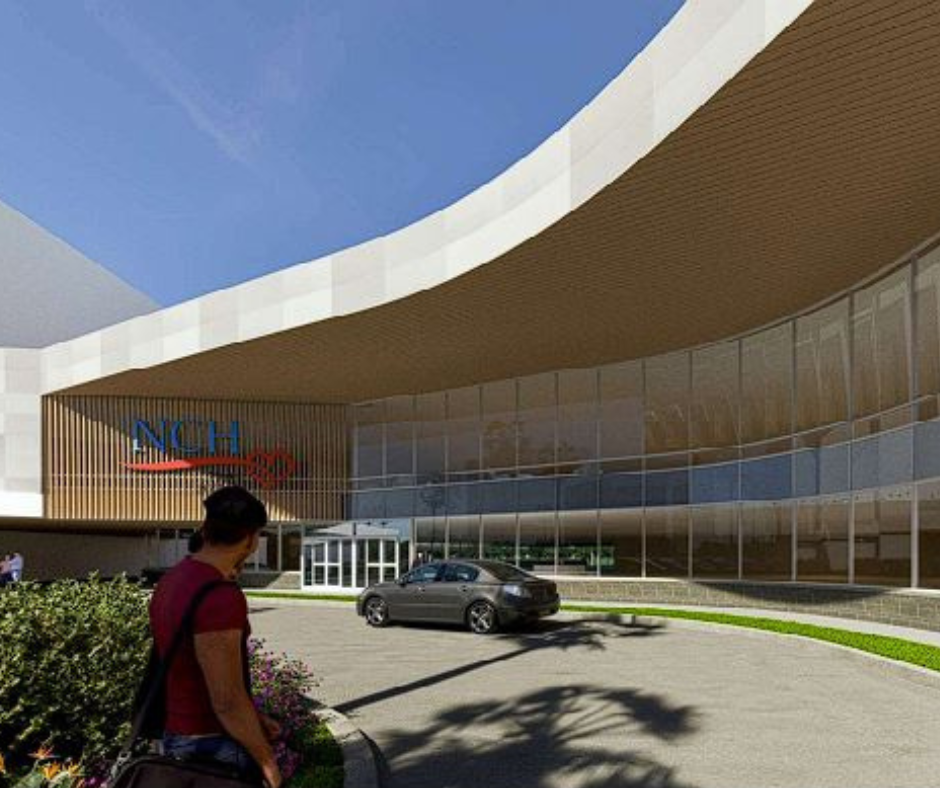Introduction
The NCH five-story heart institute concept has been approved by the design review board.
Benefits of Vertical Design in Healthcare Facilities
The National Community Hospital (NCH) has recently received approval from the design review board for their five-story heart institute concept. This new facility will be a vertical design, which is becoming increasingly popular in healthcare facilities. Vertical design offers many benefits that can improve patient care and overall efficiency.
One of the main advantages of vertical design is the ability to maximize space. Healthcare facilities often have limited space, and a vertical design allows for more efficient use of that space. By building up instead of out, hospitals can increase the number of patient rooms and medical offices without taking up more land. This is especially important in urban areas where space is at a premium.
Another benefit of vertical design is the ability to create a more streamlined workflow. In a traditional hospital layout, patients are often moved from one floor to another for different procedures or tests. This can be time-consuming and confusing for patients and staff. With a vertical design, all necessary services can be located on the same floor, reducing the need for patient transfers and improving efficiency.
Vertical design also allows for better communication and collaboration among healthcare providers. In a traditional hospital layout, different departments may be located far apart from each other, making it difficult for doctors and nurses to communicate and coordinate care. With a vertical design, all departments can be located in close proximity, allowing for easier communication and collaboration.
In addition to these benefits, vertical design can also improve patient outcomes. By locating all necessary services on the same floor, patients can receive faster and more efficient care. This can be especially important in emergency situations where every second counts. Vertical design can also improve patient safety by reducing the need for patient transfers and minimizing the risk of falls and other accidents.
Of course, there are also some challenges associated with vertical design. One of the main challenges is the need for efficient vertical transportation, such as elevators and stairwells. Hospitals must ensure that these systems are reliable and can handle the increased traffic that comes with a vertical design. Additionally, hospitals must consider the impact of a vertical design on patient privacy and comfort. Patients may feel more exposed in a tall building, and hospitals must take steps to ensure that patient privacy is protected.
Despite these challenges, the benefits of vertical design in healthcare facilities are clear. By maximizing space, improving workflow, and enhancing communication and collaboration, hospitals can provide better care to their patients. The NCH five-story heart institute concept is just one example of how vertical design is being used to improve healthcare facilities. As more hospitals adopt this approach, we can expect to see even more innovative and efficient healthcare facilities in the future.
Sustainable Features of NCH Five-Story Heart Institute Concept
The Naples Community Hospital (NCH) has recently received approval from the design review board for their five-story heart institute concept. This new facility will provide state-of-the-art care for patients with heart conditions, and it will also incorporate several sustainable features that will benefit both the environment and the community.
One of the most notable sustainable features of the NCH five-story heart institute concept is its use of renewable energy sources. The facility will be equipped with solar panels that will generate a significant portion of the building’s energy needs. This will not only reduce the hospital’s carbon footprint but also lower its energy costs, which will ultimately benefit patients and the community.
In addition to renewable energy sources, the NCH heart institute will also incorporate several water conservation measures. The facility will feature low-flow plumbing fixtures and a rainwater harvesting system that will collect and reuse rainwater for irrigation and other non-potable uses. These measures will help to conserve water resources and reduce the hospital’s overall water usage.
The NCH heart institute will also prioritize indoor air quality by using low-emitting materials and implementing a comprehensive ventilation system. This will help to reduce the presence of harmful pollutants and allergens in the air, which can have a significant impact on the health and well-being of patients and staff.
Another sustainable feature of the NCH heart institute is its use of green space. The facility will feature a rooftop garden that will provide a peaceful and healing environment for patients and staff. This green space will also help to reduce the urban heat island effect, which can contribute to higher temperatures and lower air quality in urban areas.
Finally, the NCH heart institute will prioritize sustainable transportation options. The facility will feature bike racks and showers for staff who choose to bike to work, and it will also provide electric vehicle charging stations for patients and visitors. These measures will help to reduce the hospital’s reliance on single-occupancy vehicles and promote more sustainable transportation options.
Overall, the NCH five-story heart institute concept is an excellent example of how healthcare facilities can incorporate sustainable features to benefit both the environment and the community. By prioritizing renewable energy sources, water conservation, indoor air quality, green space, and sustainable transportation options, the NCH heart institute will not only provide state-of-the-art care for patients with heart conditions but also contribute to a more sustainable future for all.
Impact of Innovative Design on Patient Outcomes in Cardiac Care
The National Children’s Hospital (NCH) in Dublin, Ireland, has recently received approval from the design review board for its five-story heart institute concept. This innovative design is set to have a significant impact on patient outcomes in cardiac care.
The heart institute will be a state-of-the-art facility that will provide comprehensive care for children with heart conditions. The design of the building has been carefully considered to ensure that it meets the needs of patients and their families. The building will be spacious, bright, and welcoming, with plenty of natural light and green spaces.
One of the key features of the heart institute is the use of technology to improve patient outcomes. The building will be equipped with the latest medical equipment and technology, including advanced imaging systems and telemedicine capabilities. This will enable doctors and nurses to provide more accurate diagnoses and treatments, leading to better outcomes for patients.
Another important aspect of the heart institute is the focus on patient-centered care. The design of the building has been informed by input from patients and their families, ensuring that it meets their needs and preferences. The building will feature private rooms for patients and their families, as well as communal spaces for socializing and relaxation.
The heart institute will also incorporate a range of sustainable design features, such as green roofs and rainwater harvesting systems. These features will not only reduce the environmental impact of the building but also contribute to the health and wellbeing of patients and staff.
The impact of innovative design on patient outcomes in cardiac care cannot be overstated. Research has shown that the physical environment can have a significant impact on patient outcomes, including reducing stress and anxiety, improving sleep quality, and enhancing overall wellbeing. By incorporating innovative design features into the heart institute, NCH is taking a proactive approach to improving patient outcomes and enhancing the overall quality of care.
In addition to the physical environment, the heart institute will also prioritize patient safety and infection control. The building will be designed to minimize the risk of infection, with features such as touchless technology and enhanced air filtration systems. This will help to protect vulnerable patients from the spread of infectious diseases and ensure that they receive the highest quality of care possible.
Overall, the approval of the NCH five-story heart institute concept is a significant milestone in the field of cardiac care. By incorporating innovative design features, the heart institute will provide a state-of-the-art facility that prioritizes patient-centered care, technology, sustainability, and safety. This will have a significant impact on patient outcomes, improving the quality of care and enhancing the overall patient experience. As other healthcare facilities look to improve their own cardiac care services, they can look to the NCH heart institute as a model for innovative design and patient-centered care.
Conclusion
The NCH five-story heart institute concept has been approved by the design review board.



